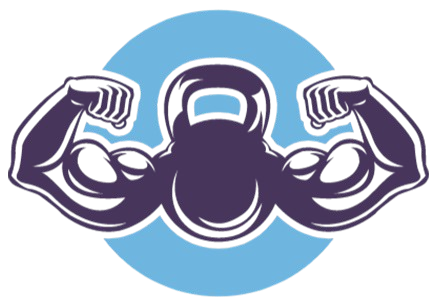Fitpro Income
Mastering Personal Trainer Public Speaking (Complete Guide)
You might love exercise, you may love fitness and you may dream of a career as a fitness instructor or personal trainer.
But, what if you are scared stiff of one of the most common fears amongst adults?
Public speaking!
It’s ok, I consider myself an introvert and am certainly no fan of public speaking, but I still managed to forge a great client base and taught myself to never fear public speaking.
In this article, I am going to teach you how to master public speaking as a personal trainer.
Sound good?
Let’s go…

Let me start off by saying that I am kind of a shy guy, I feel awkward in social settings (even with my friends) and I gave a best man’s speech once where my hands were shaking so much I could barely hold the paper in front of me.
From this, you can probably tell that I’m not particularly fond of public speaking, but I have had a long and successful personal training career where I do nothing but speak to clients for hours each day, and teach classes of up to forty people at a time.
So let’s jump into the meat of the article and I will explain how I achieved this.
Top ways to improve public speaking for personal training
- Practise
- Jumping in head first
- Listening carefully to the other person
- Watching your body language
- Treating your audience as a friend
- Prepare yourself
- Make eye contact (but not too much)
- Create an on-stage persona
1. Practise!
Most things will make you feel uncomfortable when you start doing them, and this is only because you have not yet built up your confidence in the area.
The great thing about being a personal trainer is that you have to be busy in order to survive if you are busy, you will be training sometimes 4 or 5 clients a day, usually for an hour.
That’s at least 5 hours practice of public speaking per day!
With each and every session you can improve your confidence by trying out new ways to initiate a conversation to see what works and what doesn’t.
In only a matter of weeks, you will start to see your confidence increase as you have no choice but to speak to your clients and build up a rapport.
2. Jumping in head first
Like most things that make you uncomfortable, if you never tackle the issue you will never get better at it.
One thing I found made a huge difference in increasing my confidence with public speaking was teaching classes.
Now, I know what you’re thinking, you probably hate the idea of having to stand up in front of a crowd of gym members screaming which exercise is next over loud music in front of the rest of a busy gym at peak times of the day.
This terrified me when I first started, and I cannot pretend that the first classes I took were good…because they were certainly not.
However, after some time, you really start to get more and more confident in raising your voice enough to allow your class to hear what you are instructing.
I promise you it will get so much easier
What also helped, is that a gym I moved to was famous for teaching what they referred to as “brutal” classes.
The members of the gym were mainly made up of highly competitive city workers, so they wanted incredibly high-energy classes that were ridiculously tough.
I was suddenly thrown into a situation where I was teaching 30-40 people at a time in a gym that was famous for its amazing classes.
Nothing makes you learn faster than being thrown from the firepan into the fireplace, so, if you are struggling with your confidence, I highly recommend volunteering to teach classes as a way of increasing your confidence in public speaking.
It’s also a fantastic way of picking up clients that hardly any other pt’s use, so if you want to know how to use classes as a great way of picking up new clients, click the article below and have a look at number 4 (the rest of the article is great too).
Selling Personal Training In A Gym: How To Guide
3. Listen
Before you start to think that this is one of those cop-out “fluffy” answers, it really isn’t and you’ve got to trust me on this because it’s a really good conversation hack!
Something that I was very guilty of doing (and a lot of nervous speakers are) was becoming so preoccupied with what I was going to say next, that I wasn’t properly listening to the answers I was getting from my clients.
By taking the time to carefully listen to what your client has just said to you, you will naturally find you have your own opinions and responses that easily come into your head.
To anyone reading this that doesn’t get nervous during a conversation, this will seem ridiculous, but to people who frequently find themselves having nothing to say, they will find this point very useful, I know conversations got a lot easier once I started to take the time to properly listen to a person.
4. Watch your body language

Being nervous can make you stand in very defensive poses that can make whoever you are talking to feel very uncomfortable.
The irony is that being nervous can make you look nervous which makes the other person feel nervous so the conversation cannot flow naturally.
Learn to hold yourself in casual stances, this will subconsciously make you feel more at ease and make the conversation far easier for the two of you.
Defensive stances to avoid like the plague:
- Crossed arms
- Crossed legs whilst standing
- Fidgeting or swaying back and forth
- Slouching
- Not making eye contact (looking at the floor)
Keep your body language as “open” as possible, which is to say pretty much the opposite of everything I have listed above.
Keep your arms uncrossed, don’t fidget, sway or slouch.
I found that when I was talking to my clients at the end of each set, crouching down next to them and discussing how the set went or whatever it was they wanted to discuss was nice, comfortable, and open body language.
5. Treat them like a friend
If you treat all your clients as if every word you say will be the make or break of whether or not they will carry on training with you, you will always be nervous.
Instead, talk to them as if they are your friend (within reason and whilst staying professional of course).
By acting as if you are simply training a friend of yours, you will instantly feel far calmer and project a laid-back and approachable version of yourself, putting both of you at ease.
This is great for making you both feel calmer in the short term, but it also has the amazing effect of rapidly speeding up the rate at which you build rapport with your clients.
It’s a fake it until you make it situation, where you start off feeling better about speaking in front of someone by pretending they are your friend, but in a short period of time, they will actually end up becoming your friend, so you are no longer having to pretend.
Rapport is something that is often touted as the best way to retain clients, and this is one of the most simple and natural ways I found to do it.
6. Prepare yourself for conversations
So, going into a situation you don’t feel prepared for may be ok for some people, but if you are really worried about having nothing to say to people you are training, a good idea would be to put together some basic topics of conversation that you can use to get the conversation flowing.
Please don’t carry around a list of topics with you, that will communicate to everyone around you your lack of confidence which will not help you in any way.
Instead, sit down with a pad and pen and write up a list of conversation openers that will work on most of the general population. It may seem like you are using the same standard “small talk” as everyone else in the country, but when you lack confidence in your speaking ability they are a great little get out of jail free card for you to use.
Memorize a few of these conversation openers and use them as and when you need to.
7. Make eye contact

Yup, this one’s tough, but it’s crazily important so I need to tell you about it and you really need to practice this.
You will see that on my list of defensive stances to avoid, I mention looking at the floor, and that is for very good reason.
Nothing will display your lack of speaking confidence to someone like not being able to look them in the eye whilst engaging in conversation.
Making eye contact whilst talking is not the same as staring at someone, that’s just creepy!
The idea is to casually look into their eyes every now and then during a conversation. Try using the 50/70 rule, which is to maintain eye contact for 50% of the time you are speaking and 70% of the time that you are listening.
I would suggest that you don’t look into the persons’ eyes for too long each time, a few seconds here and there before glancing away for a short while. This should be long enough to establish the eye contact that you want without coming across as staring that the person.
It’s a tricky skill to master, so try the old trick of practicing this in the mirror first before you go out and do it in person, or even ask a friend or family member. Remember though that it will seem easier with someone that you know as opposed to a person that you have just met and are nervous about.
8. Create an on-stage persona
Before I start this point, I need to make it clear that I am not saying you should pretend to be someone you’re not, I don’t like that and I don’t think it works because people can often see right through it.
What I am suggesting is that something that really helped me when I had to go and start teaching the seriously intense classes to lots of people was to create this alternate version of myself as a class instructor.
During my 1-2-1 sessions, I am pretty laid back and never scream and shout at my clients. However, in an exercise class, I needed to do this. I had to teach myself to be a completely different type of trainer, which at first was certainly not an easy task.
The way I managed to do this, was to see myself as one of the trainers I had seen training people on programs such as P90X and so on. The trainers there are constantly shouting motivation and encouragement to the class participants.
This was not (and still isn’t) in my personality, but when I see myself as one of these trainers teaching a class like theirs, it becomes much easier. I suppose in a sense it’s kind of acting, and just like in acting, the more you do it, the better you perform.
Conclusion
Improving your public speaking takes time, only the truly extroverted will be good at it naturally, and even they can usually improve it.
If you are naturally introverted, please do not be put off a career in personal training or fitness instruction. By using these tips and with a little (sometimes quite a lot) of practice, you will become far more accustomed to it than you would imagine.
If you prepare yourself and accept that in the beginning, you are going to be nervous, but know that it will get better, you should find that the tips above start to get easier and easier.
Don’t feel that you always have to be screaming at clients and talking to large crowds by the way. If your training style is more relaxed then stay that way, this is why your clients have chosen to train with you, and if you suddenly change personalities overnight, people may leave you.
Improve your confidence with public speaking and use it to help you pick up new clients and teach classes, then if you prefer to take a slightly more soft approach during your sessions, go with that.
Do what works best for you as a trainer, people will see that you are being genuine and will love training with you.
I hope this article has given you the advice you were looking for to improve your public speaking in your personal training or fitness instructor career.
Go get ’em!
